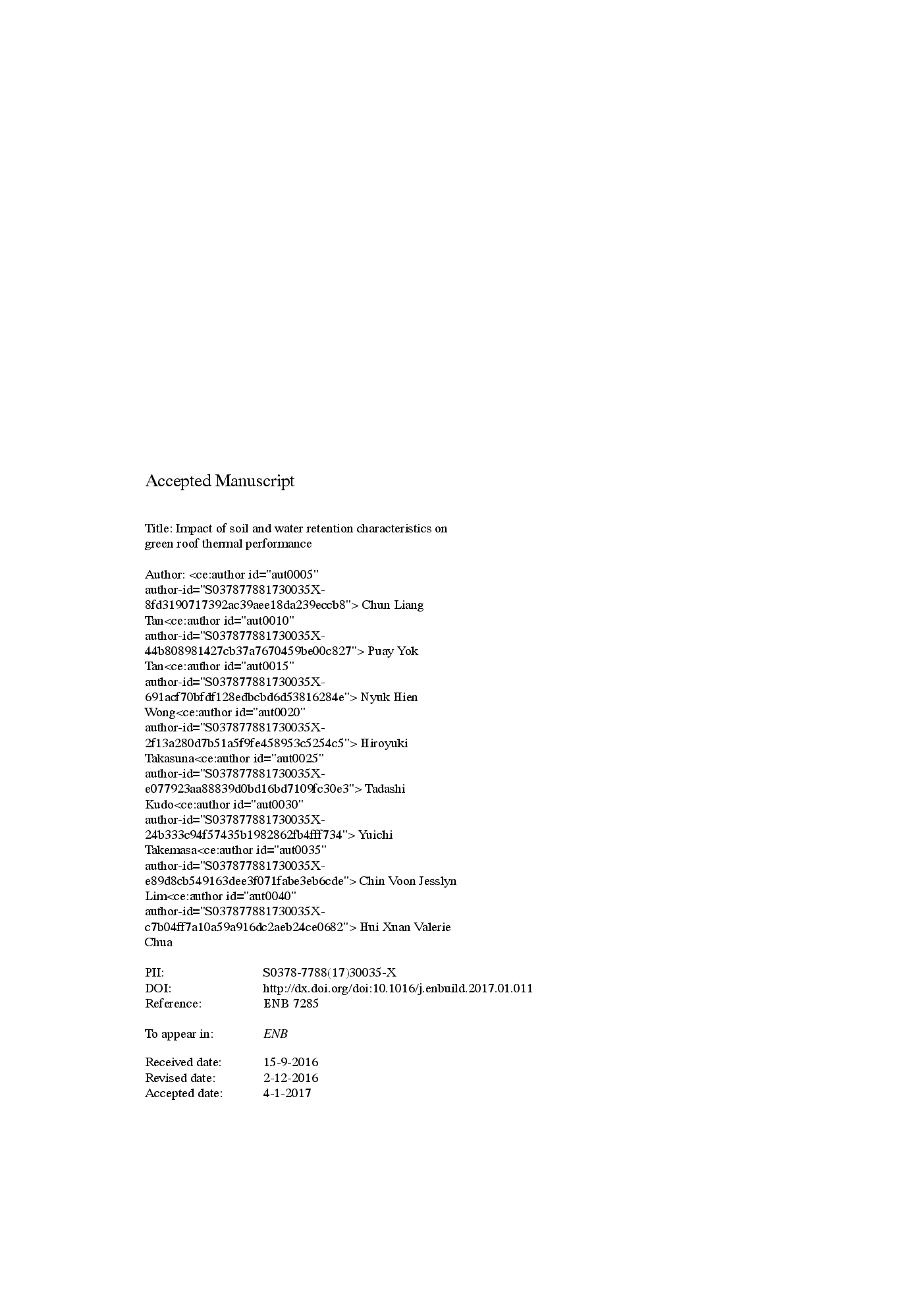ترجمه فارسی عنوان مقاله
تأثیر ویژگی های نگهداری خاک و آب بر عملکرد حرارتی سقف سبز
عنوان انگلیسی
Impact of soil and water retention characteristics on green roof thermal performance
| کد مقاله | سال انتشار | تعداد صفحات مقاله انگلیسی |
|---|---|---|
| 151882 | 2017 | 36 صفحه PDF |
منبع

Publisher : Elsevier - Science Direct (الزویر - ساینس دایرکت)
Journal : Energy and Buildings, Volume 152, 1 October 2017, Pages 830-842
ترجمه چکیده
تعداد روزافزون مطالعاتی در حال حاضر نشان دهنده مزایای سبز روباه در کاهش مصرف انرژی ساختمان و بهبود محیط زیست شهری است. با این حال، تا حدی که این مزایای حرارتی تحت تأثیر اجزاء و طراحی سیستم های سبز روبشی قرار گرفته است توجه کافی را به خود جلب نکرده است. در این مقاله، نتایج حاصل از یک مطالعه برای ارزیابی اثرات سوبسترا و لایه ی نگهدارنده آب بر عملکرد حرارتی یک سیستم سقف سبز مدولار گزارش شده است. ارزیابی بر روی دمای سطوح سقف سبز و پاسخ گیاهان در یک آزمایش میدانی با دو روش اصلی تمرکز دارد: انواع سوبسترا (خاک های معمولی باغ در مقایسه با سولفور رشد سبک وزن بدون خاک) و وجود یا عدم وجود یک لایه حفظ آب در سبز سیستم سقف درجه حرارت سطح در سه موقعیت در نمای عمودی سیستم سقف سبز و پاسخ گیاهان (تبخیر تعرق و هدایت دهانه) با استفاده از سطوح مختلف دسترسی به آب در بستر رشدی مقایسه شد که با قرار دادن سقف سبز به سه مرحله آبیاری در طول دوره دو ماهه: آبیاری برای رسیدن به شرایط آب آشامیدنی، آبیاری نگهداری شده برای ایجاد شرایط خشکسالی و آبیاری به شرایط خشکسالی پیش از خشکسالی بازگردانده شده است. نتایج نشان می دهد که دمای سطح به دلیل پوسته پوسته شدن به عنوان زیر کشت رشد می کند. لایه ی نگهداری آب نیز در طول روز باعث کاهش دمای سطح در لایه ی مولچ شد. با این حال، لایه ی احتباس آب ممکن است منجر به افزایش جزئی در دمای سطح بتن شود، احتمالا به علت گرما ذخیره شده در لایه ی نگهداری آب. مطالعه نشان می دهد که ترکیب لایه ی نگهدارنده آب می تواند برای سقف های سبز در حفظ رطوبت خاک، میزان تبخیر و تعرق و سلامت گیاه مفید باشد. ما در مورد نتایج دیگر مربوط به نیازهای آبیاری و بهینه سازی مزایای سقف های سبز برای خنک سازی بحث می کنیم.

